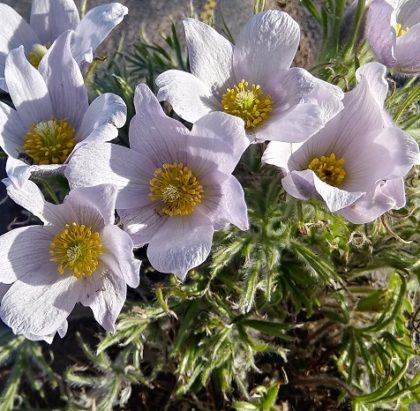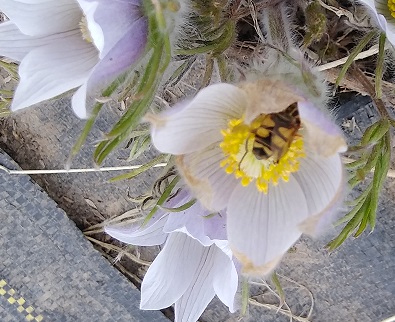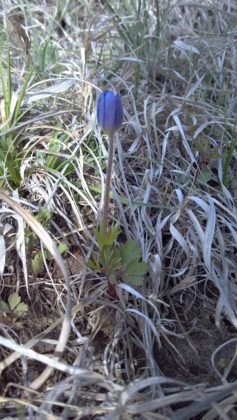Anemone patens (pasque flower)

This week we will feature Anemone patens. This plant blooms in early April making it one of the first bloomers on the prairie and of great value to early pollinators. Early blooming species are some of the more rare plants in Nebraska. I would attribute this to several factors. Among them is the early application of burn-down herbicides for conventional agriculture; Another is early season grazing. Currently most Pasque Flower in Nebraska is located in the northern tier counties. and just across the Missouri River into Iowa.
Anemone comes from the Latin word meaning “to sway” and patens means “spreading”. The common names for this flower include windflower, twin flower and pasque flower. Its conservatism value is 6 which means it prefers undisturbed remnant prairie sites. Our Nebraska species are a light lavender with a yellow center. In the nursery trade, you can find a variety of this flower that is a deep purple. These are not the typical color of Nebraska natives. It is one of 6 native species of Anemone in Nebraska.

In this flower, the female organs become ready to accept pollen before the pollen is released. Because of this, the flower must receive pollen from a different flower and therefore gets genetic material donated from a different plant so its seed carries more diverse genetics than it would otherwise. Nectaries at the base of the stamens attract pollinators. Mining bees and bumble bees come looking for nectar and syrphid flies and sweat bees feed on the pollen. Seed set is in early May. The wispy styles hang on to the fruit, called an achene.
This plant is difficult to find in great numbers and so we have very few to offer each year. We need your help collecting seed. If you purchase a plant from us, please collect its seed and mail it back. We will reward you with a free plant or packet of seed.
Another early Anemone species is Anemone caroliniana (C value 7). Carolina anemone is a tiny little plant that is often overlooked and usually drops its seeds suddenly before you have a chance to collect them, if you are lucky enough to be able to find the plant with seed after flower fades. Carolina anemone is common on remnant prairies in the eastern half of Nebraska, but hard to find in the trade. Both Anemones are less than a foot tall. Both are stunning regardless of size and are some of the first plants to provide pollen and nectar for early insects. We have no seed or plants for this species as of yet. We will publish a list on our website and facebook page of plants for which we need local sources of seed. Look for that soon or if you have a little remnant prairie that you would like us to look into for seed sources, send me a contact note.

These plants, the habitat they provide, and the fauna that use that habitat are some of the reasons why we need to save remnant prairies

